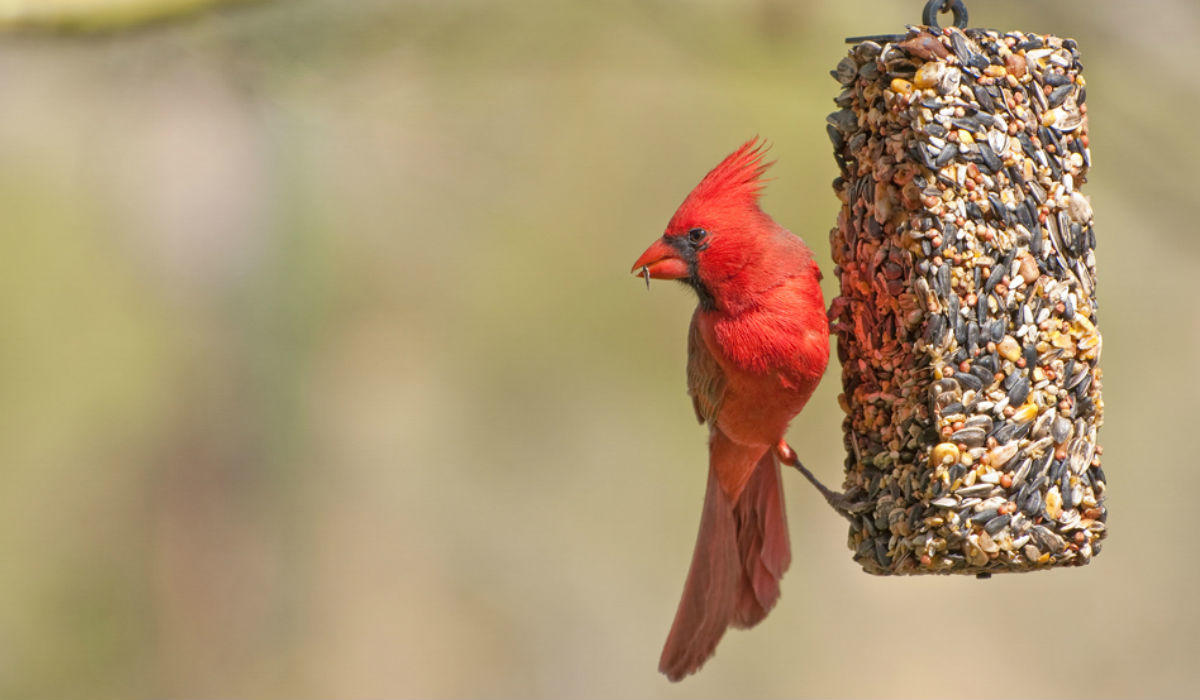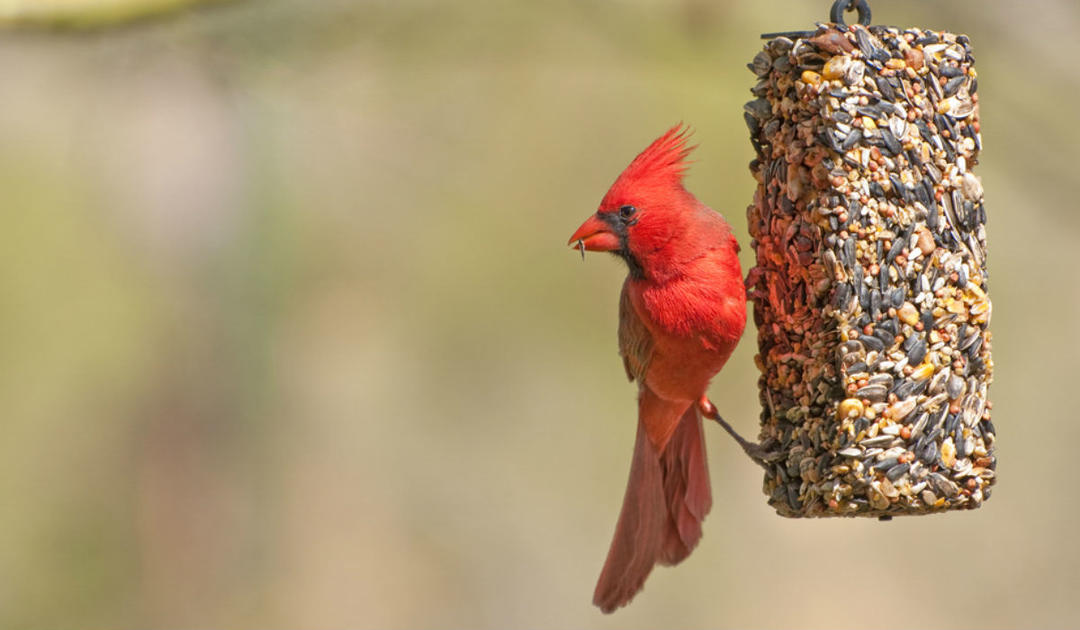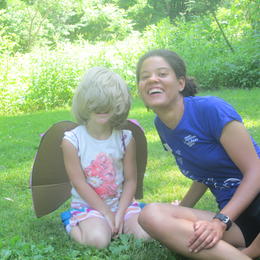With the first snowfalls of the year blanketing the Green Mountain Audubon Center here in Huntington, the urge to put out our feeders is strong. We have a deluxe set-up here, thanks to the donation of many feeders from some generous folks. Our Nature Playgroup enjoys filling them and checking to see which birds (and squirrels) stop by our porch for a snack.
However, with great joy comes great responsibility. Here is everything you need to know for happy birds, happy bird feeding, and happy birding.
When should I put out my feeders?
We follow the recommendations set forth by the Vermont Fish and Wildlife Department to protect the bears that are thriving in Vermont. The bear population is currently estimated to be within the state’s population objective of 4,500-6,000 individuals and according to the 2018 Black Bear Report, bears were harvested in 187 of our state’s 251 towns. Reports of bears in conflict situations were received from many additional towns. So if you live near forest habitat, chances are good that a bear calls that habitat home. The downside to having bears as neighbors is that they can be labeled as nuisance bears when they seek out food from human sources. Anything from your uncleaned grill to a chicken coop to trash cans or birdfeeders can attract bears to your property, at which point the state might have to intervene for the safety of the humans who caused the problem in the first place. In 2018, “at least 48 [bears] were dispatched as the result of other bear-human conflicts.” (2018 bear report)
All this means that as feeders of birds, we have a responsibility to protect the other wildlife that are attracted to our feeders, even if they are not our target audience. Here’ss what you need to keep in mind when putting up feeders each winter (with thanks to Forrest Hammond, Vermont Fish and Wildlife Department’s Wildlife Biologist and Black Bear Project Leader):
- Food abundance and availability dictate much of a bear's actual denning time. In mast years, when trees are producing nuts and seeds in large quantities, wild foods like acorns and beech nuts are plentiful. Bears will delay hibernation to take advantage of these rich foods. This year is a good food year for bears. Many bears are still active now despite snow covering the ground.
- A rough start date for bird-feeding is December 1, based on food availability and snow cover. In general, however, it is pretty safe to begin feeding earlier if there is 8-10 inches of snow on the ground and the temperatures remain cold.
- Bears can re-emerge for short feeding forays if there is a period of warm weather. The old ideas of hibernation don’t quite follow for bears:. Bears will wake up to eat if there is a source of food nearby, to give birth, or to escape perceived threats. You need to remain vigilant for bear signs (e.g. tracks, damaged neighbor's feeders) after your bird feeders are put up and remove them if necessary.
- Pregnant sows are likely to den earlier than rest of population, so the timing of denning is not the same for all individuals. Any bears roaming about after December 1st are usually male bears.
- The end of bird feeding season is usually around April 15. Again, this is weather and snow condition dependent. Check with the Vermont Fish and Wildlife Department for recommendations to bring feeders in early.
Will these recommendations affect birds?
No, not really. It will take the birds a little while to find your feeder, so expect there to be a delay from when you hang them up to when you actually see birds. The same abundant food that the bears are eating in late fall is also filling the bellies and caches of our overwintering bird species. Your backyard feeder only represents a small portion of a bird’s total diet, so don’t worry that the delay in putting up bird feeders is harming their survival.
What/how should I feed the birds?
Great question! There are lots of choices and this article from Audubon Magazine explains it beautifully:
https://vt.audubon.org/bird_feeding
So I put up my feeder, have been checking for signs of bears, and the birds found my feeder, but now I have not seen any birds for a while. Where did the birds go?
We often get calls from concerned birders, asking about the sudden lack of birds at their feeders off and on during the fall and winter. Some folks report being consistent feeders for decades and noticing a decline of numbers, particularly during good seed crop years such as this year. While we do unfortunately expect our bird population to change in the face of climate change, that doesn’t necessarily explain why you are not seeing any birds right now. Check out the following resources on this question:
- https://vt.audubon.org/news/whered-birds-go
- https://www.birdwatchingdaily.com/beginners/birding-faq/julie-craves-explains-why-birds-sometimes-abandon-feeders/#
- https://wildbirdsunlimited.typepad.com/the_zen_birdfeeder/2009/09/top-5-reasons-why-birds-stop-visiting-your-feeders.html
- https://www.allaboutbirds.org/news/im-seeing-fewer-birds-in-my-yard-is-something-affecting-their-populations/
- https://wildbirdsunlimited.typepad.com/the_zen_birdfeeder/
How often should I clean my bird feeders?
You should definitely clean your feeders at the beginning and end of the season. You also need to empty and clean you feeder if there is any sign of mold or mildew on the feeder or the seed. The Cornell Lab of Ornithology recommends cleaning your feeder every two weeks throughout the feeding season. Just like us, birds can spread disease to one another and this is more likely to happen when they are sharing communal feeders and baths. You can clean your feeder or birdbath with soap and water, by throwing it in the dishwasher, or using a dilute bleach solution. For more information, check out this article: https://www.allaboutbirds.org/news/how-to-clean-your-bird-feeder/
What can I do to help the birds this winter?
To help scientist understand how population numbers are changing, there are three great opportunities to participate in a community science projects this winter: the Audubon Christmas Bird Count, the Great Backyard Bird Count, and Feeder Watch. All three aim to collect as much data as possible on our avian neighbors.
The Audubon Christmas Bird Count runs from December 14th through January 5, 2020. Locate a count circle near you: https://www.audubon.org/conservation/join-christmas-bird-count
The Great Backyard Bird Count is the weekend of February 14-17, 2020
FeederWatch is winter-long survey of birds that visit backyard feeders from November through April
You can also use the winter to plan your Bird-friendly Garden. Get lots of helpful information, tips, resources, and even the names of local plants on our website.






